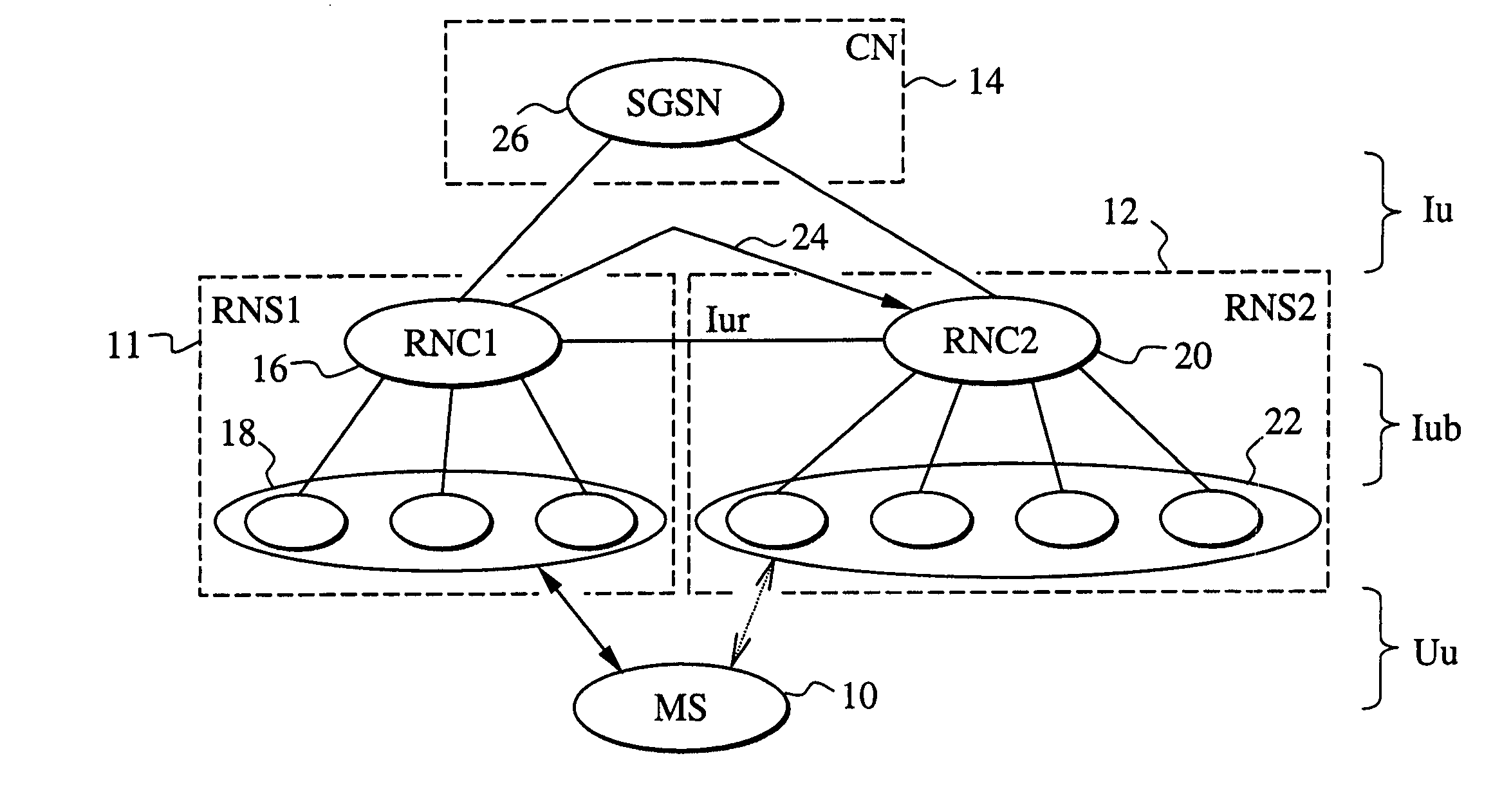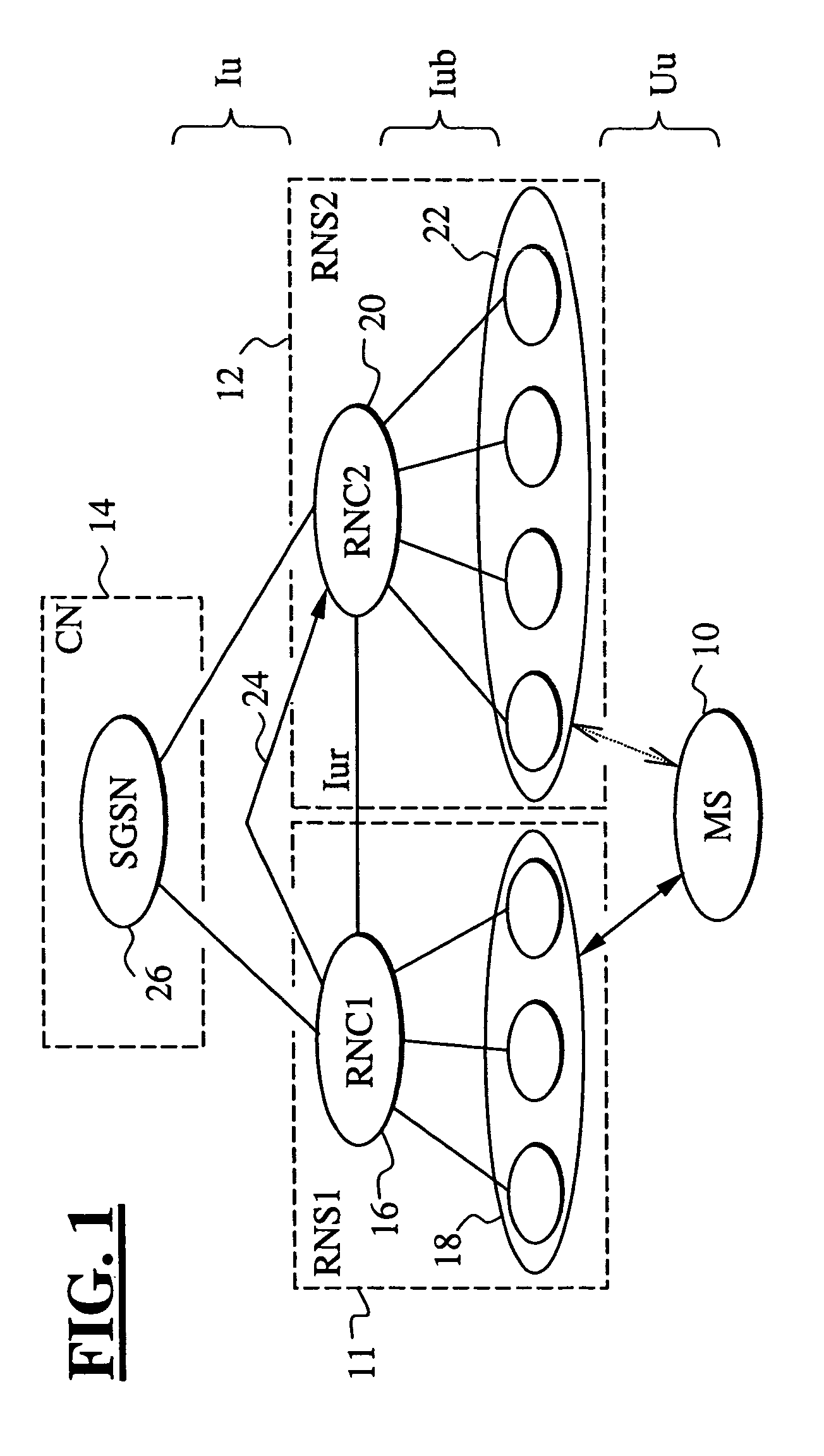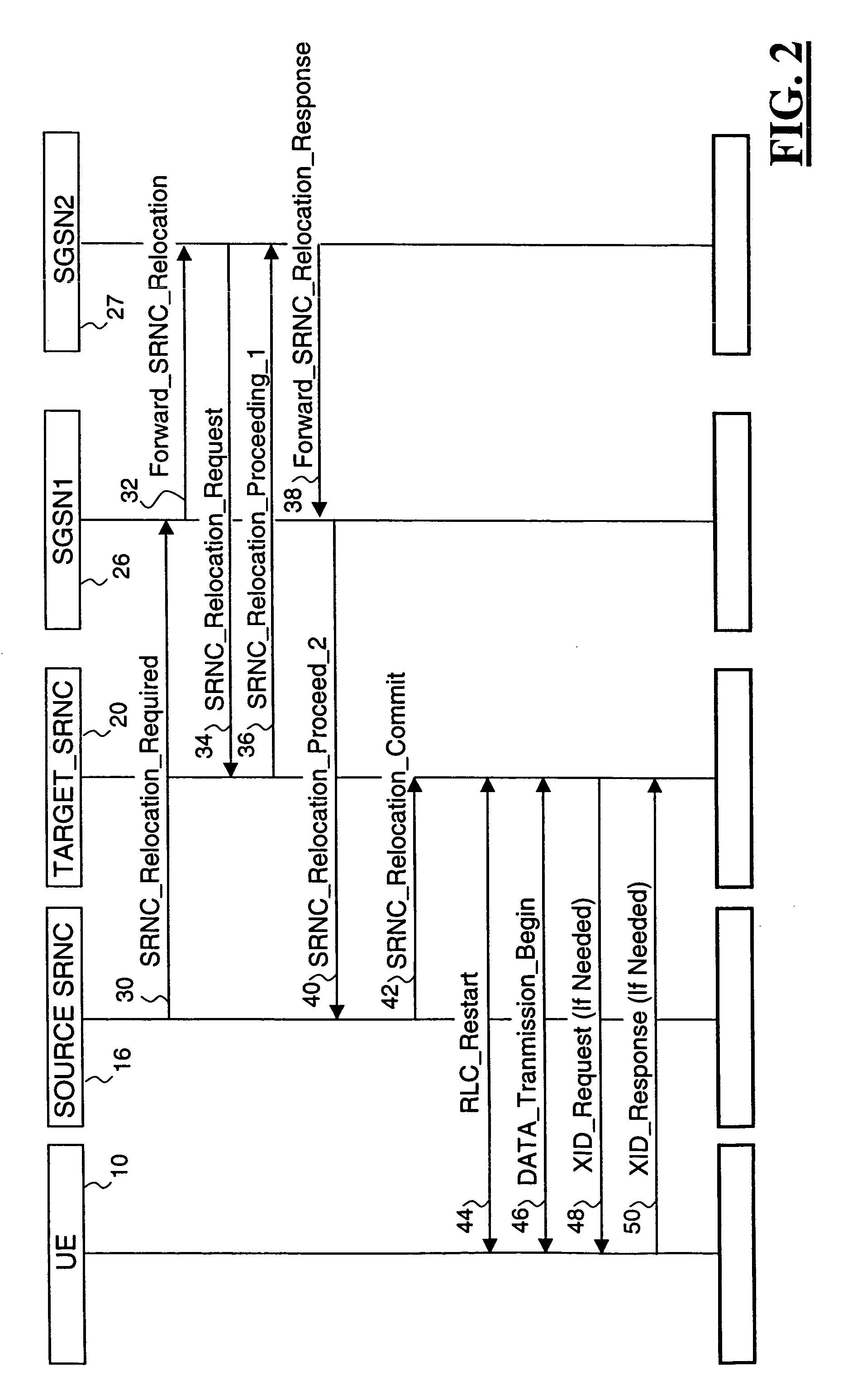Transfer of optimization algorithm parameters during handover of a mobile station between radio network subsystems
a technology of radio network subsystems and optimization algorithms, applied in the direction of wireless communication services, electrical equipment, wireless communication services, etc., can solve the problems of unfavorable retransmission unfavorable additional packet loss, and lack of flow control between the ms and the core network, so as to save resources for the air interface
- Summary
- Abstract
- Description
- Claims
- Application Information
AI Technical Summary
Benefits of technology
Problems solved by technology
Method used
Image
Examples
example 1
[0081]An example of negotiation of header compression (HC) parameters is shown in FIG. 3. When Mobile Station connects to the network RRCs with a UE CAPABILITY INFORMATION message is used to inform the SRNC of the header compression (HC) methods that UE is able to use and the parameters thereof. This information is left to the network to be updated and taken care of.
[0082]After comparing the network's own and these received parameters, the network makes a decision of the HC-method to be used, also taking into consideration the QoS requirements. Thus it is possible to choose the most probable HC method (in other words, according to QoS requirements the first configured method can be chosen to be real-time traffic optimized method or not). After the network has made the decision it configures its own compressor, generates the OPT value table and commands using RRC messages RADIO BEARER SETUP (FIG. 4) or RADIO BEARER RECONFIGURATION (FIG. 5) the parameters relating to that algorithm wi...
example 2
[0086]Again, when the Mobile Station connects to the network RRCs with the UE CAPABILITY INFORMATION message of FIG. 3, the SRNC—RNC is informed of the desired header compression (HC) methods that the UE is able to use and the related parameters. This information is left to the network to be updated and taken care of.
[0087]The network chooses the methods that can be supported based on its own supported methods as well as those of the UE. After this the network could send the parameters of all the supported methods at the same time with a message to the UE. This would mean that both the network and the UE would know which methods can be supported. In this case also the OPT table indicating different packet types of different methods is generated to be similar at both ends. This information transfer can be carried out by using RRC's RADIO BEARER SETUP, as shown in FIG. 4, or RADIO BEARER RECONFIGURATION messages, as shown in FIG. 5. At the same time the most probable method is informe...
example 3
[0091]It is also possible that network informs the UE about the methods it supports when connecting to the network and in case of SRNS relocation after SRNC—relocation—Commit message. In this case UE begins the transmission of compressor parameters using some RADIO BEARER SETUP (FIG. 4) and RADIO BEARER RECONFIGURATION (FIG. 5) based signaling and the compressor generating procedure according to example 1 or 2 with the difference that UE sends the configuration messages and network receives them.
[0092]The current (prior art) solution in GPRS is that XID negotiation is made again when the location of SGSN changes (inter SGSN handover). This negotiation is required, because the SNDCP and LLC protocols locate in SGSN and the old XID parameters are not known in the new SGSN (and they may also be non-applicable). XID negotiation is made for certain (most, but not all) LLC and SNDCP parameters, e.g., header compression parameters.
[0093]However, this approach is not very suitable for UMTS....
PUM
 Login to View More
Login to View More Abstract
Description
Claims
Application Information
 Login to View More
Login to View More - R&D
- Intellectual Property
- Life Sciences
- Materials
- Tech Scout
- Unparalleled Data Quality
- Higher Quality Content
- 60% Fewer Hallucinations
Browse by: Latest US Patents, China's latest patents, Technical Efficacy Thesaurus, Application Domain, Technology Topic, Popular Technical Reports.
© 2025 PatSnap. All rights reserved.Legal|Privacy policy|Modern Slavery Act Transparency Statement|Sitemap|About US| Contact US: help@patsnap.com



